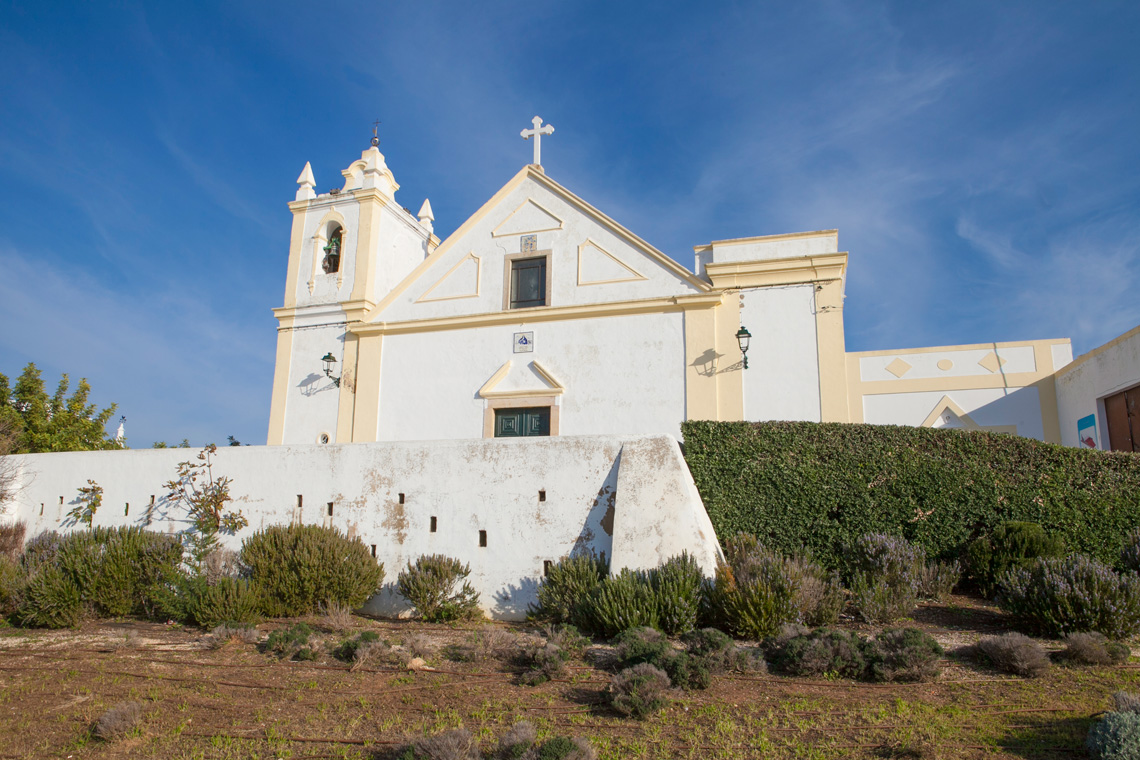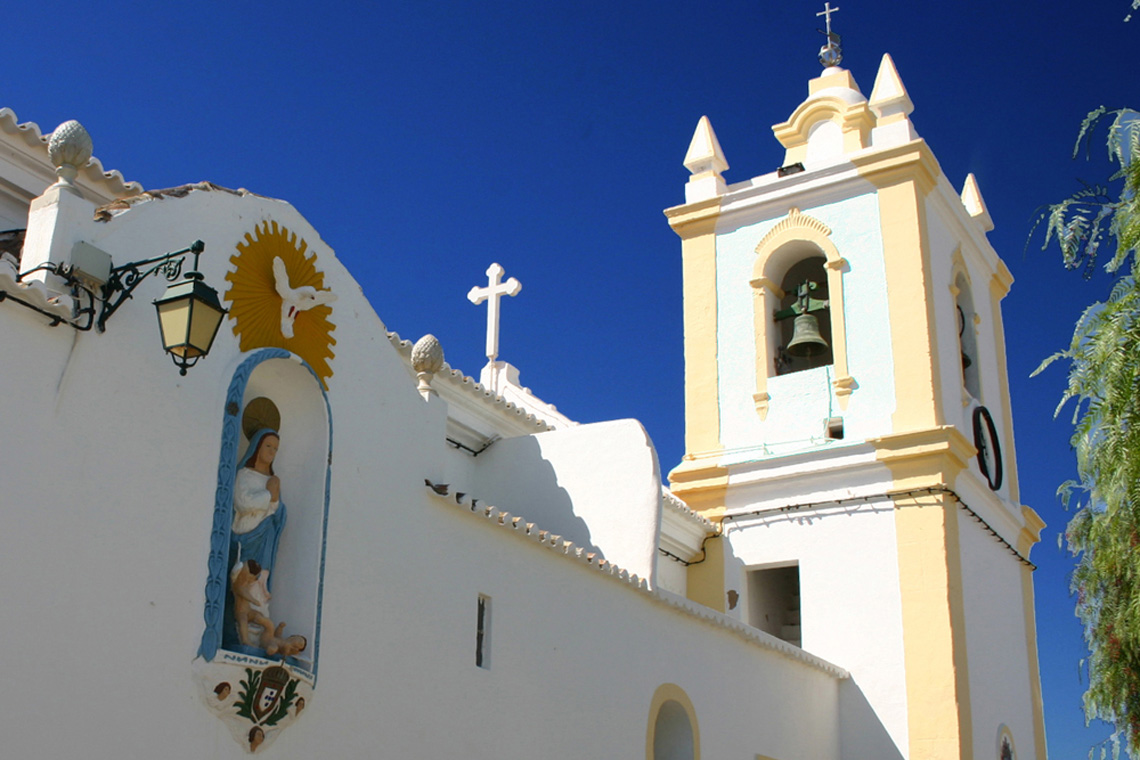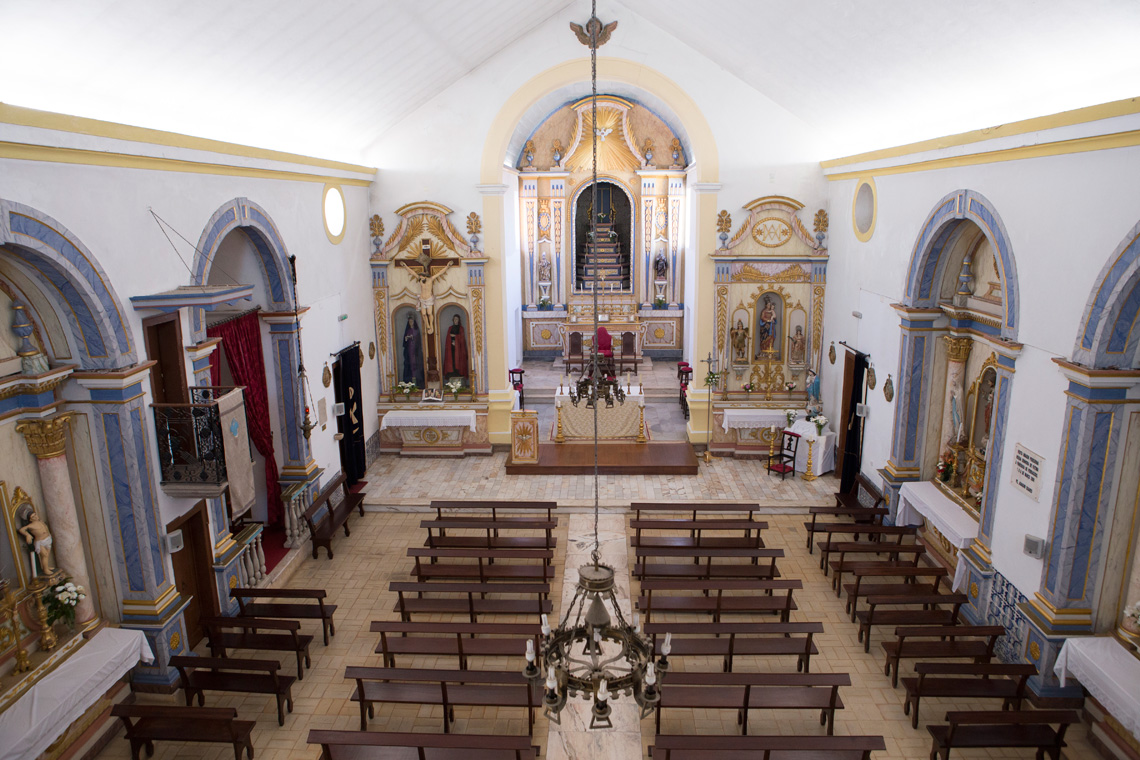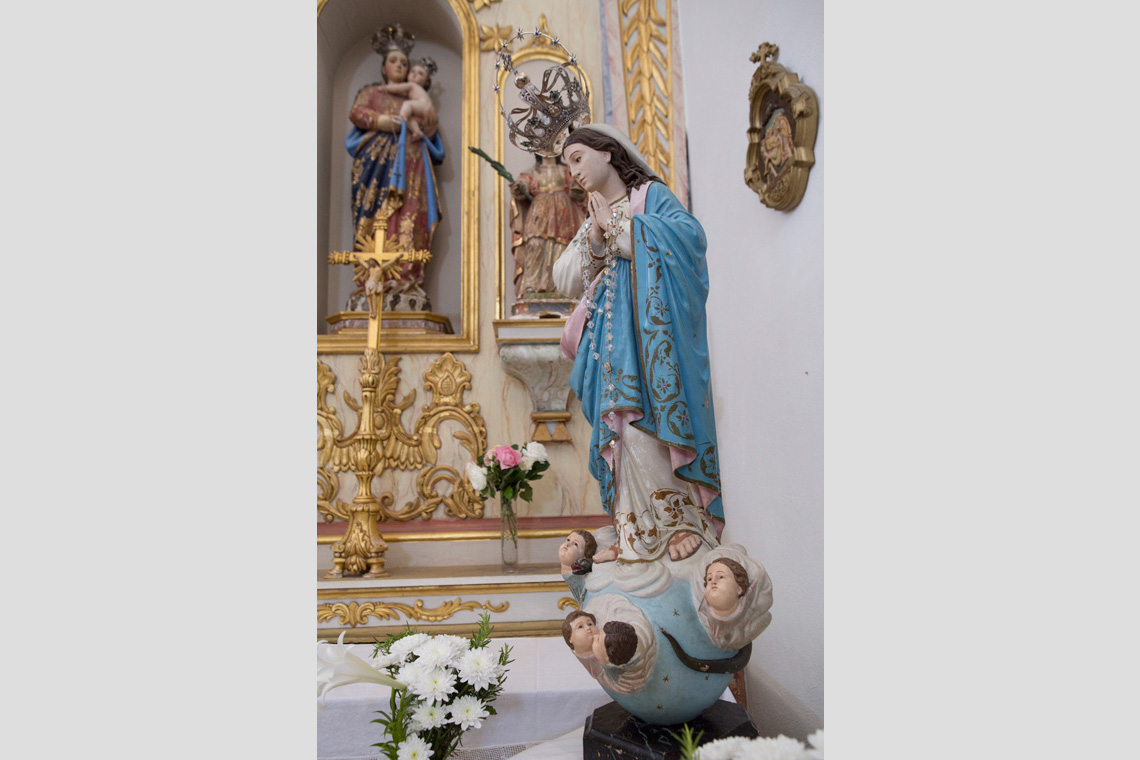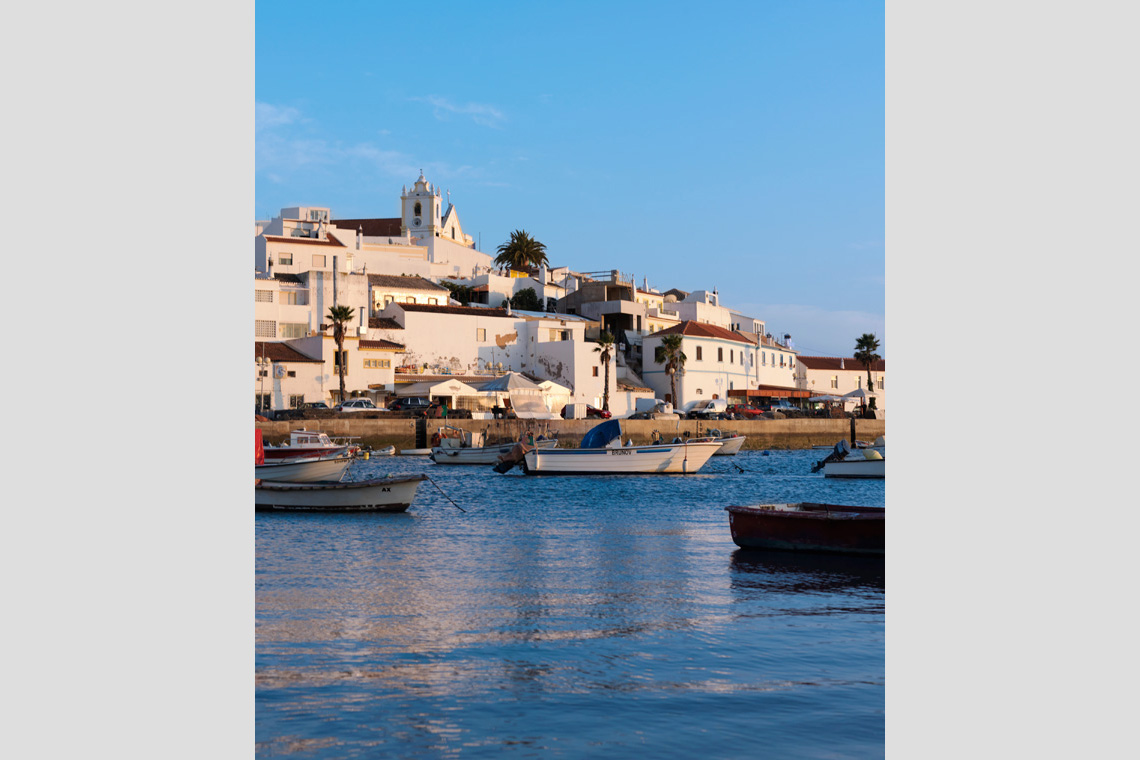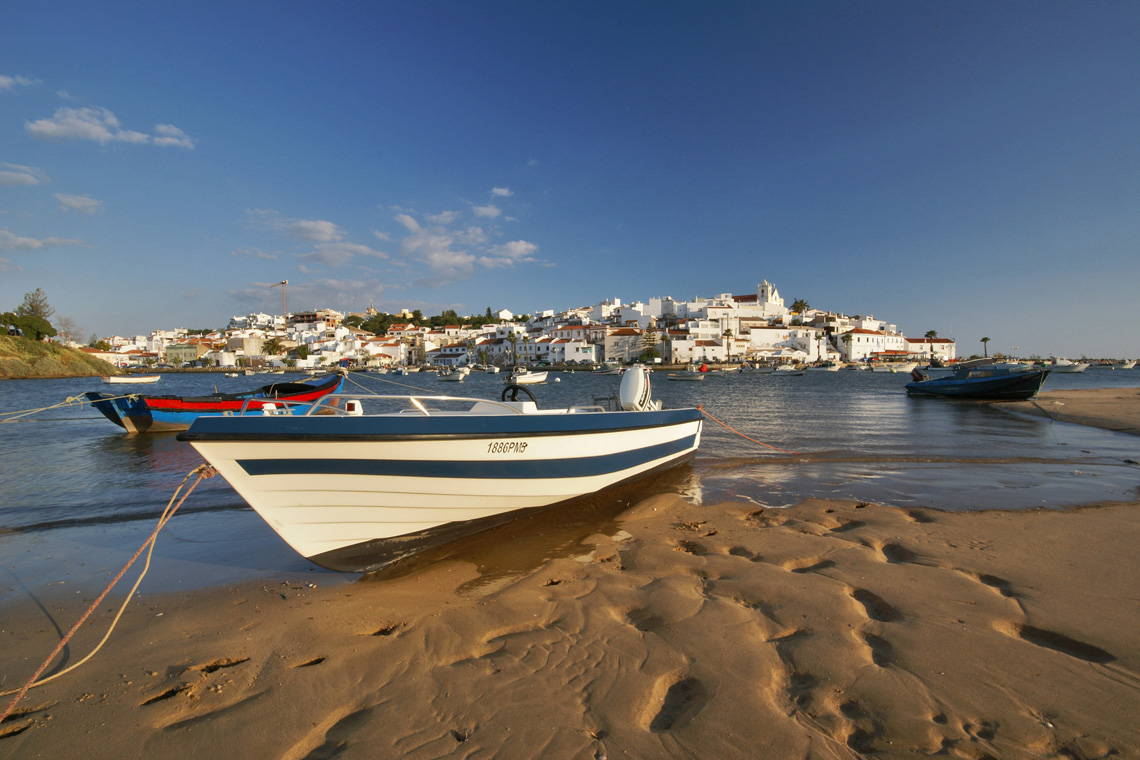01. Igreja Matriz de Ferragudo
Main Church of Ferragudo
Main Church of Ferragudo
Cronologia: Idade Moderna (Séc. XVI ) e Idade Contemporânea (Séc. XX)
Chronology: Modern (16th century) and Contemporary Age (20th century)
Chronology: Modern (16th century) and Contemporary Age (20th century)
Ferragudo apresenta-se como um aglomerado labiríntico de casario branco com forte ligação ao mar.
A origem do topónimo encontra-se presente no “Codex Pseudo-calixtinus” cujo texto narra a presença de um gigante árabe defensor da causa Maometana chamado “Ferracutus”. Com Reconquista definitiva do Algarve no século XIII, os membros da Ordem de Sant’Iago, conhecedores e impulsionadores desta lenda, trazem-na para o Al-gharb considerando que a zona onde assenta esta Vila, junto ao rio, iria ser ponto de encontro para combater simbolicamente o “gigante Islâmico” no Algarve, isto é, Silves.
Aqui no alto da Vila, em 1520, foi erguida a Igreja de Nossa Senhora da Conceição. Em 1755 o terramoto destruiu-a e a sua reconstrução já não obedeceu aos parâmetros originais. A planta retangular e a cobertura em madeira e telhas guardam um interior provido de ornamentos, destacando-se os retábulos de talha dourada e polícroma e o fragmento de cruzeiro oriundo do Ilhéu do Rosário, com a representação de Nossa Senhora e de Cristo Crucificado em dupla face (sécs. XV-XVI). Guarda ainda uma imagem de São Sebastião (séc. XVI), outras dos séculos. XVII e XVIII e importantes testemunhos de arte popular encomendada: os ex-votos de mareantes e pescadores dos sécs. XVIII e XIX, com promessas feitas à padroeira e aos milagres por ela realizados. A nascente da igreja, a Torre do Moinho é uma estrutura de vigia do século XV muito alterada pelas distintas utilizações, uma delas como moinho. Mais abaixo, nos restaurantes da zona ribeirinha, o prato forte é o saboroso peixe fresco.
Ferragudo has a deep connection to the sea. Ferragudo is a labyrinthine cluster of whitewashed buildings with a strong connection to the sea. The origin of the name is explained in the "Codex Pseudo-calixtinus"; the text tells of a giant Arab defender of the Muslim cause whose name was "Ferracutus". When the Algarve was finally and definitively reconquered in the thirteenth century, the members of the Order of Saint James, who were acquainted with and propagated this legend, brought it to the Al-gharb; they considered that the area where the town stands, next to the river, would be a meeting point for the symbolic combat against the "Islamic giant" in the Algarve, i.e. Silves.
The Church of Nossa Senhora da Conceição (Our Lady of the Conception) was built here in the upper part of the town in 1520.
In 1755, it was destroyed by the earthquake and its renovation didn’t obey to the original features. The rectangular plant and the wooden and tile roof protect an interior full of ornaments, with polychrome and gilded wood retable, a ship’s fragment from the small Island of the Rosary with the representation of Our Lady and Crucified Christ in double face (15th-16th century). It also keeps an image of Saint Sebastian (16th century) and others from the 17th and 18th centuries, and important testimonies of popular art: former promises from seafarers and fishermen from the 18th and 19th centuries with promises made to the Patron Saint and her miracles. The Torre do Moinho (Mill Tower) is a structure from the 15th century that has been severely altered due to its usage, one of them as a mill. Down at the restaurant area, the main dish is the delicious fresh fish.
